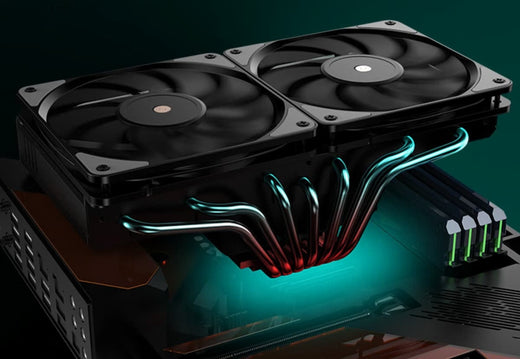Advances in processors, with their multiple cores and innovative technologies, have boosted computer performance, but have also led to greater power demands and increased size. This has led to concerns about CPU temperatures and the need for efficient fan cooling to maximize their potential.
Let's read this article to see the key factors in temperature measurement and some practical tips for keeping it under control.
Key Factors in Measuring CPU Temperatures
The constant increase in power in modern processors brings with it a challenge: thermal management. This is a critical element for optimizing performance and preventing long-term damage. Given this scenario, the question arises about the key factors in measuring CPU temperature.
Sensors and Internal Measurement
Modern CPUs incorporate various sensors that measure temperatures in different internal sections. It's essential to understand these measurements to avoid confusion when interpreting the data.
Core temperature refers to the temperature measured within the processor itself, in its internal components. This involves measuring the temperature at the heart of the processing unit, where the CPU logic and cores are located. Another type of temperature is the surface temperature of the IHS (Integrated Heat Spreader) or integrated heatsink, also known as Tcase. The IHS is a metal layer that covers the CPU's internal components and helps disperse heat. It's the metal "box" we often see on top of a processor.
So, while "core temperature" focuses on the internal temperature of the processor, "Tcase" focuses on the temperature at the surface of the IHS. Both measurements are relevant for understanding how a processor behaves thermally and for ensuring that temperature conditions are within safe limits for proper chip operation.
Critical Values and Processor Protection
The maximum operating temperature varies between 95 and 110 degrees depending on the processor model. Knowing this limit is crucial to avoid damage. Some CPUs have internal modules, such as the Intel Management Engine, that reduce the frequency or shut down the system if the temperature is exceeded, providing a layer of protection.
Performance Optimization: Technologies like Turbo Boost and PBO
To achieve maximum CPU performance, it's essential to keep temperatures below the maximum limit. Technologies such as Intel's Turbo Boost or AMD's PBO are activated under certain conditions, such as sufficient power and controlled temperatures. The optimal temperature is between ambient and maximum operating temperatures.
Practical Tips to Keep Temperatures Under Control
Powerful processors, such as Intel's i9 or AMD's Ryzen 9, present challenges in heat dissipation, hence the importance of using powerful coolers such as the Asus Rog Ryujin III 360 ARGB , in addition to following some tips to keep the temperature under control.
The first recommendation is to stick with larger air coolers and more powerful liquid cooling systems than you need ; these solutions can make a difference. However, keep in mind that in some extreme cases, even with advanced systems like custom liquid cooling, it can be difficult to control temperatures.
In laptops, where heatsink replacement is limited, undervolting can be useful to prevent excessive temperatures. Undervolting is a technique that reduces the voltage supplied to an electronic component, such as a processor, in order to reduce its power consumption and, consequently, its heat production. Unlike overclocking, which involves increasing the clock frequency and often requires more voltage, undervolting aims to operate the component more efficiently and cooler.
In conclusion, understanding and controlling CPU temperatures is essential to ensuring optimal performance and preventing long-term damage to your computer. Selecting the right PC cooling systems and implementing strategies to keep temperatures under control are key steps. Optimize your gaming experience and performance with these tips!

